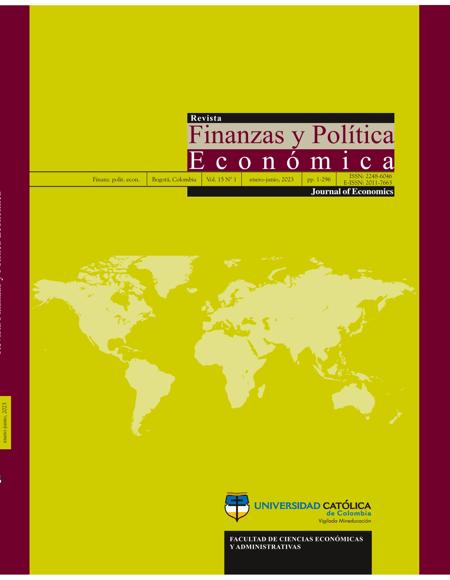
This work is licensed under a Creative Commons Attribution-NonCommercial-ShareAlike 4.0 International License.
This journal is licensed by a Creative Commons Attribution License (CC BY-NC-SA 4.0) Attribution-Non Commercial 4.0 International. For the CC licenses, the principle isthe creative freedom. This system complements the copyright without opposing it, conscious of its importance in our culture. The content of the articles is the responsibility of each author, and does not compromise in any way, to the journal or the university. It allows the transmission and reproduction of titles, abstracts and full content, with academic, scientific, cultural ends, provided acknowledgment of the respective source. This work cannot be used for commercial purposes.
They journal does not charge authors for submission or publication.
Abstract
In this article, the transorganization concept of Eikhof (2014) is worked on and is proposed as a way to describe creative micro-organizations, which are considered to be significant in the field of creative industries. From this theoretical contextualization, it seeks to propose self-management as the main strategy used by these organizations to face their ambiguous and uncertain context and thus be able to use improvisation as structure (Hatch, 1990) from the loose coupling of functions (Douglas and Weick, 1990). For that, the work proposes the theoretical approaches that the academy has had towards creative entrepreneurship and thus focus on these theoretical concepts; subsequently analyzes the effect of these concepts from the economy; presents the methodological tool used from a qualitative approach of the case study with participant observation and in-depth interviews; Finally, it makes a study of three cases of creative micro-organizations in music to give an empirical study that support the initial theoretical proposal.

References
Barba Álvarez, A., & Montoya Flores, M. T. (2013). De la planeación al pensamiento estratégico. Aproximación a un debate inconcluso. Revista de Administración y Organizaciones, 16(30), 51-77. https://rayo.xoc.uam.mx/index.php/Rayo/article/view/104/89
Barrero Castellanos, J., Cortázar Triana, D., Muñoz Montoya, A., Berger, J. J., Vargas Pardo, C., & Cubillos Aguirre, J. (2021). La urdimbre comercial de las organizaciones creativas en América Latina. Economía Creativa, (14).
Bourdieu, P. (1993). The Field of Cultural Production. Essays on Art and Literature. Columbia University Press.
Cohendet, P., Grandadam, D., & Simon, L. (2009). Economics and the Ecology of Creativity: Evidence from the Popular Music Industry. International Review of Applied Economics, 23(6), 709-722. https://doi.org/10.1080/02692170903239879
Cortázar Triana, D. (2021). El campo institucional del emprendimiento creativo: una primera aproximación en México y Colombia. Revista de Administración y Organizaciones, 47(24), 66-88. https://doi.org/10.24275/uam/xoc/dcsh/rayo/2021v24n47/Cortazar
Cortázar Triana, D. (2023). La esquizofrenia del emprendimiento creativo: estudio de tres casos colombo-mexicanos en un campo transorganizacional artístico. [Tesis de Doctorado en Estudios Organizacionales, Universidad Autónoma Metropolitana, Unidad Iztapalapa] http://tesiuami.izt.uam.mx/uam/aspuam/presentatesis.php?recno=24298&docs=UAMII24298.pdf.
De la Rosa Albuquerque, A., Rivera, I., & Marín, A. (2015). Propuesta de clasificación integral de la MIPYME basada en la complementariedad disciplinar de las perspectivas económica, administrativa y organizacional. En I. Rivera González y A. De la Rosa Albuquerque (coords.). La MIPYME a debate. Perspectivas de estudio, mitos, actores clave, propuestas y vinculación (pp. 3-49). Grupo Editorial Gasca.
de Propris, L., & Mwaura, S. (2013). Demystifying cultural intermediaries: Who are they, what do they do and where can they be found in England? Discussion Paper. University of Birmingham, Birmingham Business School. http://epapers.bham.ac.uk/1768/
Douglas, O. J., & Weick, K. (1990). Loosely Coupled Systems: A Reconceptualization. Academy of Management Review, 15(2), 203-223. https://www.jstor.org/stable/258154
Eikhof, D. R. (2014). Transorganizational Work and Production in the Creative Industries. En C. Bilton y S. Cummings (Eds.), Handbook of Management and Creativity. Edward Elgar Publishing.
Eikhof, D. R., & Haunschild, A. (2007). For Art’s Sake! Artistic and Economic Logics in Creative Production. Journal of Organizational Behavior, (28), 523-538. https://doi.org/10.1002/job.462
Hatch, M. J. (1999). Exploring the Empty Spaces of Organizing: How Improvisational Jazz Helps Redescribe Organizational Structure. Organization Studies, 20(1). https://doi.org/10.1177/0170840699201004
Küng, L. (2014). Leading for Creativity in Turbulent Times. En C. Bilton y S. Cummings (Eds.), Handbook of Management and Creativity. Edward Elgar Publishing.
Lindström, S. (2016). Artists and Multiple Job Holding - Breadwinning Work as mediating between Bohemian and Entrepreneurial Identities Behavior. Nordic Journal of Working Life Studies, 6(3), 43-58. https://doi.org/10.19154/njwls.v6i3.5527
Packendorff, J. (1995). Inquiring into the Temporary Organization: New Directions for Project Management Research. Escandinavian Journal of Management, 11(4), 319-333. https://doi.org/10.1016/0956-5221(95)00018-Q
Throsby, D. (2012). Heritage Economics: A Conceptual Framework. En G. Licciardi & R. Amirtahmasebi (Eds.), The Economics of Uniqueness. Investing in Historic City Cores and Cultural Heritage Assets for Sustainable Development. World Bank.





























